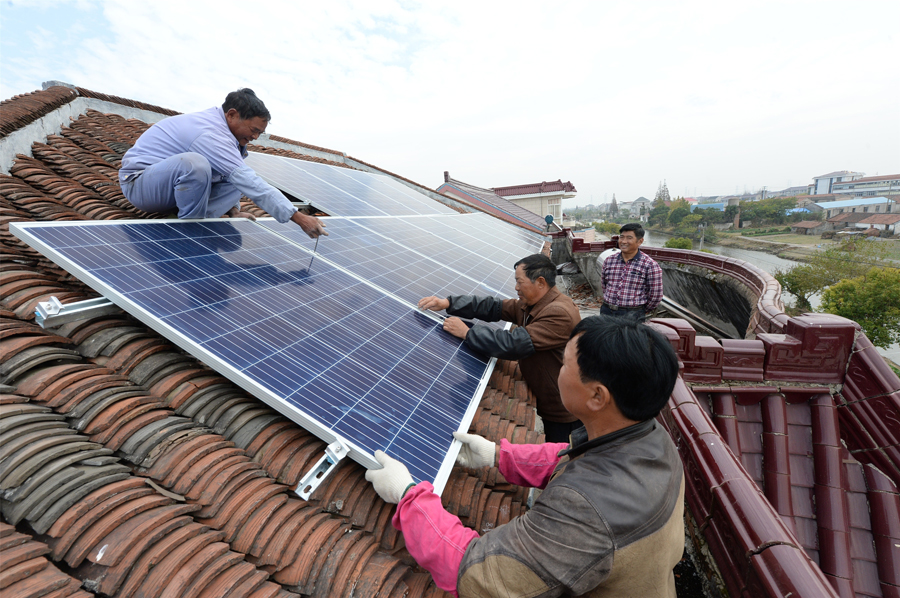State Grid supplies cleaner energy
 0 Comment(s)
0 Comment(s) Print
Print E-mail China Daily, March 15, 2018
E-mail China Daily, March 15, 2018
The State Grid Corporation of China is building an energy-services company to promote the distribution of clean energy as part of its efforts to restructure energy consumption in the country, said the corporation's chairman.

Shu Yinbiao, also a member of the 13th National Committee of the Chinese People's Political Consultative Conference, said the services company will supply not only power but also heating services.
"We will gather together disparate solar and wind energy sources and use them as heating sources," Shu said.
The company is also helping rural households shift to electricity as a heating source in northern China.
More than 1 million households in Beijing's rural areas shifted to electricity as a heating source last year.
Now each household in northern China consumes an average of 4,000 kilowatt-hours of electricity in the winter heating season, instead of the previous 3 to 4 metric tons of coal, a major contributor to air pollution during the heating supply season, he said.
"With more new energy connected to the grid and the development of the micro grid, the needs of power consumers are increasingly diversified," said Shu.
Currently, people and businesses can pay much lower prices if they consume electricity at off-peak instead of at peak demand times.
The company is promoting intelligent charging units for electric motors, which can automatically charge during the off-peak times. Customers can ask for installation and maintenance services for solar photovoltaic and charging units with a simple click on a website, he said.
Solar photovoltaic generation is also being promoted in rural China to contribute to poverty relief. At least 20 million rural households have installed solar photovoltaic generators.
"With the facilities the company installs, farmers could not only know how much electricity they have generated, but also how much was sold to the grid and how much they could make from that," he said.
Shu called on the government to approve the construction of more ultra high-voltage power superhighways to transmit clean energy from western China to the eastern part to increase clean energy consumption across the whole country.
Most of the country's clean energy, including solar and wind energy, is in western China. However, the energy consumption market is too small in the region. Meanwhile, the current inadequate electric power transmission capability fails to distribute this to other parts of the country, which results in great losses, he said.
He also suggested the government break market barriers in eastern regions so that clean energy from the west can enter local markets.
The ultra high-voltage power superhighway is efficient in power transmission with low costs. The price of electricity transmitted via it to eastern China can still be 0.1 yuan (2 US cents) lower than locally generated power.
While saving a lot of money, construction of the power highway could help increase investment in the western region and create a lot of employment opportunities there, he said





